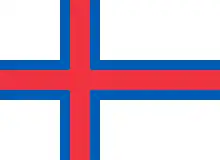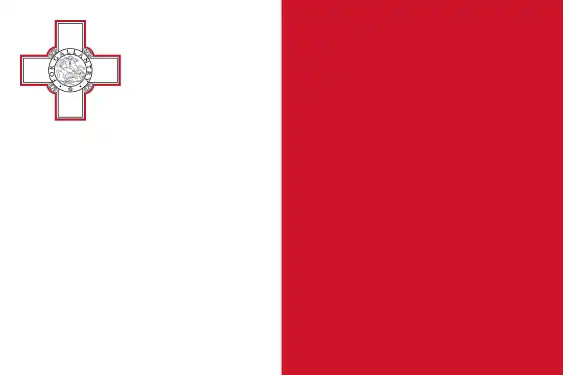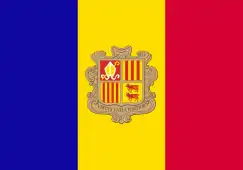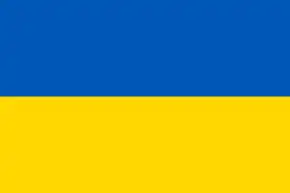 Allianz Arena in Munich will host the final. | |
| Tournament details | |
|---|---|
| Dates | Qualifying: 9 July – 28 August 2024 Competition proper: 17 September 2024 – 31 May 2025 |
| Teams | Competition proper: 36 Total: 83 (from 53 associations) |
The 2024–25 UEFA Champions League will be the 70th season of Europe's premier club football tournament organised by UEFA, and the 33rd season since it was rebranded from the European Champion Clubs' Cup to the UEFA Champions League. This will be the first season of UEFA Champions League played under a new format approved in May 2022.[1]
The final will be played on 31 May 2025 at Allianz Arena in Munich, Germany.[2] The winners of the 2024–25 UEFA Champions League will automatically qualify for the 2025–26 UEFA Champions League league phase, earn the right to play against the winners of the 2024–25 UEFA Europa League in the 2025 UEFA Super Cup, 2025 FIFA Intercontinental Cup, and potentially enter the 2029 FIFA Club World Cup (this is yet to be determined).
Association team allocation
A total of 83 teams from 53 of the 55 UEFA member associations are set to participate in the 2024–25 UEFA Champions League (the exceptions being Liechtenstein which does not organise a domestic league and Russia which is currently suspended). The association ranking based on the UEFA association coefficients is used to determine the number of participating teams for each association:[3]
- Associations 1–5 each have four teams.
- Association 6 has three teams.
- Associations 7–15 each have two teams.
- Associations 16–55 (except Liechtenstein[Note LIE] and Russia[Note RUS]) each have one team.
- The winners of the 2023–24 UEFA Champions League and 2023–24 UEFA Europa League are each given an additional entry if they do not qualify for the 2024–25 UEFA Champions League through their domestic league.
- The two associations who obtain the most coefficient points in the 2023–24 season will each have one extra spot into the league stage.
Association ranking
For the 2024–25 UEFA Champions League, the associations are allocated places according to their 2023 UEFA association coefficients, which takes into account their performance in European competitions from 2018–19 to 2022–23.[4]
Apart from the allocation based on the association coefficients, associations may have additional teams participating in the Champions League, as noted below:
- (EXT) – Additional berths for associations who finished in the top 2 of the 2023–24 association coefficients
- (UEL) – Additional berth for UEFA Europa League title holders
|
|
|
Distribution
| Teams entering in this round | Teams advancing from the previous round | ||
|---|---|---|---|
| First qualifying round (30 teams) |
|
||
| Second qualifying round (30 teams) |
Champions Path (24 teams) |
|
|
| League Path (6 teams) |
|
||
| Third qualifying round (20 teams) |
Champions Path (12 teams) |
| |
| League Path (8 teams) |
|
| |
| Play-off round (14 teams) |
Champions Path (10 teams) |
|
|
| League Path (4 teams) |
| ||
| League stage (36 teams) |
|
| |
The information here reflects the ongoing suspension of Russia in European football, and so the following changes to the default access list have been made:
- The champions of associations 23 (Sweden) and 24 (Poland) will enter the second-qualifying round instead of the first-qualifying round (Champions Path).
Should the Champions League title holders have qualified via their domestic league, then the club (Champions Path only) with highest club coefficient will enter the league stage.
Should the Europa League title holders have qualified via their domestic league, then the club (Champions Path & League Path) with the highest club coefficient will enter the league stage, except for the runners-up of associations 11–15, as they have higher-ranked domestic team in the qualifiers.
Teams
The labels in the parentheses show how each team qualified for the place of its starting round:
- TH: Champions League title holders
- EL: Europa League title holders
- 1st, 2nd, 3rd, 4th, etc.: League positions of the previous season
- Extra: The additional berths given to clubs from the 2 associations with the highest coefficient points in 2023–24
The second qualifying round, third qualifying round and play-off round are divided into Champions Path (CH) and League Path (LP).
| Entry round | Teams | |||||||
|---|---|---|---|---|---|---|---|---|
| League stage | ||||||||
| Play-off round | CH | |||||||
| Third qualifying round | LP | |||||||
| Second qualifying round | CH | |||||||
| LP | ||||||||
| First qualifying round | ||||||||
| CH | ||||||||
- ^ Liechtenstein (LIE): The seven teams affiliated with the Liechtenstein Football Association (LFV) all play in the Swiss football league system. The only competition organised by the LFV is the Liechtenstein Football Cup – the winners of which qualify for the UEFA Europa League for the 2024–25 season.
- ^ Russia (RUS): On 28 February 2022, Russian football clubs and national teams were suspended from FIFA and UEFA competitions due to the Russian invasion of Ukraine. [5] The tables reflect Russia's ongoing suspension from UEFA competitions.[6]
Schedule
The schedule of the competition is as follows.[7] Compared to past seasons, "exclusive week" will be introduced in which Thursday will also be a matchday.[8][9][10] All matches in other weeks will be played on Tuesdays and Wednesdays apart from the final.
| Phase | Round | Draw date | First leg | Second leg |
|---|---|---|---|---|
| Qualifying | First qualifying round | 18 June 2024 | 9–10 July 2024 | 16–17 July 2024 |
| Second qualifying round | 19 June 2024 | 23–24 July 2024 | 30–31 July 2024 | |
| Third qualifying round | 22 July 2024 | 6–7 August 2024 | 13 August 2024 | |
| Play-offs | Play-off round | 5 August 2024 | 20–21 August 2024 | 27–28 August 2024 |
| League stage | Matchday 1 | 29 August 2024 | 17–19 September 2024 | |
| Matchday 2 | 1–2 October 2024 | |||
| Matchday 3 | 22–23 October 2024 | |||
| Matchday 4 | 5–6 November 2024 | |||
| Matchday 5 | 26–27 November 2024 | |||
| Matchday 6 | 10–11 December 2024 | |||
| Matchday 7 | 21–22 January 2025 | |||
| Matchday 8 | 29 January 2025 | |||
| Knockout phase | Knockout round play-offs | TBD | 11–12 February 2025 | 18–19 February 2025 |
| Round of 16 | 4–5 March 2025 | 11–12 March 2025 | ||
| Quarter-finals | 8–9 April 2025 | 15–16 April 2025 | ||
| Semi-finals | 29–30 April 2025 | 6–7 May 2025 | ||
| Final | 31 May 2025 at Allianz Arena, Munich | |||
Qualifying rounds
First qualifying round
A total of 30 teams will play in the first qualifying round.
 HJK CC: 11.500
HJK CC: 11.500 Flora CC: 11.000
Flora CC: 11.000 KÍ CC: 10.000
KÍ CC: 10.000 Shamrock Rovers CC: 9.500
Shamrock Rovers CC: 9.500 RFS CC: 8.000
RFS CC: 8.000 Dinamo Batumi CC: 5.500
Dinamo Batumi CC: 5.500 Dinamo Minsk CC: 4.500
Dinamo Minsk CC: 4.500 Panevėžys CC: 4.000
Panevėžys CC: 4.000 Ordabasy CC: 4.000
Ordabasy CC: 4.000 Víkingur Reykjavík CC: 4.000
Víkingur Reykjavík CC: 4.000 Winners of 2023–24 Nemzeti Bajnokság I
Winners of 2023–24 Nemzeti Bajnokság I Winners of 2023–24 Liga I
Winners of 2023–24 Liga I Winners of 2023–24 First Professional Football League
Winners of 2023–24 First Professional Football League Winners of 2023–24 Slovak First Football League
Winners of 2023–24 Slovak First Football League Winners of 2023–24 Azerbaijan Premier League
Winners of 2023–24 Azerbaijan Premier League Winners of 2023–24 Slovenian PrvaLiga
Winners of 2023–24 Slovenian PrvaLiga Winners of 2023–24 Moldovan Super Liga
Winners of 2023–24 Moldovan Super Liga Winners of 2023–24 Football Superleague of Kosovo
Winners of 2023–24 Football Superleague of Kosovo Winners of 2023–24 Armenian Premier League
Winners of 2023–24 Armenian Premier League Winners of 2023–24 Premier League of Bosnia and Herzegovina
Winners of 2023–24 Premier League of Bosnia and Herzegovina Winners of 2023–24 Luxembourg National Division
Winners of 2023–24 Luxembourg National Division.svg.png.webp) Winners of 2023–24 NIFL Premiership
Winners of 2023–24 NIFL Premiership Winners of 2023–24 Maltese Premier League
Winners of 2023–24 Maltese Premier League Winners of 2023–24 Kategoria Superiore
Winners of 2023–24 Kategoria Superiore Winners of 2023–24 Cymru Premier
Winners of 2023–24 Cymru Premier Winners of 2023–24 Gibraltar Football League
Winners of 2023–24 Gibraltar Football League Winners of 2023–24 Macedonian First Football League
Winners of 2023–24 Macedonian First Football League Winners of 2023–24 Primera Divisió
Winners of 2023–24 Primera Divisió Winners of 2023–24 Montenegrin First League
Winners of 2023–24 Montenegrin First League Winners of 2023–24 Campionato Sammarinese di Calcio
Winners of 2023–24 Campionato Sammarinese di Calcio
The winners of the ties will advance to the Champions Path second qualifying round. 14 of the 15 losers will be transferred to the Conference League Champions Path second qualifying round and 1 loser will receive a bye and be transferred to the Conference League Champions Path third qualifying round.
Second qualifying round
A total of 30 teams will play in the second qualifying round. They will be divided into two paths:
- Champions Path (24 teams): 9 teams which enter in this round, and 15 winners of the first qualifying round.
- League Path (6 teams): 6 teams which enter in this round.
Champions Path
 Bodø/Glimt CC: ≥29.500
Bodø/Glimt CC: ≥29.500 Malmö FF CC: 18.500
Malmö FF CC: 18.500 Winners of 2023–24 Czech First League
Winners of 2023–24 Czech First League Winners of 2023–24 Danish Superliga
Winners of 2023–24 Danish Superliga Winners of 2023–24 Croatian Football League
Winners of 2023–24 Croatian Football League Winners of 2023–24 Super League Greece
Winners of 2023–24 Super League Greece Winners of 2023–24 Israeli Premier League
Winners of 2023–24 Israeli Premier League Winners of 2023–24 Cypriot First Division
Winners of 2023–24 Cypriot First Division Winners of 2023–24 Ekstraklasa
Winners of 2023–24 Ekstraklasa- 15 winners of the first qualifying round
League Path
 Runner-up of 2023–24 Austrian Football Bundesliga
Runner-up of 2023–24 Austrian Football Bundesliga Runner-up of 2023–24 Serbian SuperLiga
Runner-up of 2023–24 Serbian SuperLiga Runner-up of 2023–24 Süper Lig
Runner-up of 2023–24 Süper Lig.svg.png.webp) Runner-up of 2023–24 Swiss Super League
Runner-up of 2023–24 Swiss Super League Runner-up of 2023–24 Ukrainian Premier League
Runner-up of 2023–24 Ukrainian Premier League Runner-up of 2023–24 Czech First League
Runner-up of 2023–24 Czech First League
The winners of the ties will advance to the third qualifying round of their respective path. The Champions Path losers will be transferred to the Europa League Champions Path third qualifying round, while the League Path losers will be transferred to the Europa League Main Path third qualifying round.
Third qualifying round
A total of 20 teams will play in the third qualifying round. They will be divided into two paths:
- Champions Path (12 teams): 12 winners of the second qualifying round (Champions Path).
- League Path (8 teams): 5 teams which enter in this round, and 3 winners of the second qualifying round (League Path).
Champions Path
- 12 winners of the second qualifying round (Champions Path)
League Path
 Fourth place of 2023–24 Ligue 1
Fourth place of 2023–24 Ligue 1 Third place of 2023–24 Eredivisie
Third place of 2023–24 Eredivisie Runner-up of 2023–24 Primeira Liga
Runner-up of 2023–24 Primeira Liga.svg.png.webp) Runner-up of 2023–24 Belgian Pro League
Runner-up of 2023–24 Belgian Pro League Runner-up of 2023–24 Scottish Premiership
Runner-up of 2023–24 Scottish Premiership- 3 winners of the second qualifying round (League Path)
The winners of the ties will advance to the play-off round of their respective path. The Champions Path losers will be transferred to the Europa League play-off round, while the League Path losers will be transferred to the Europa League league stage.
Play-off round
A total of 14 teams will play in the play-off round. They will be divided into two paths:
- Champions Path (10 teams): 4 teams which enter in this round, and 6 winners of the third qualifying round (Champions Path).
- League Path (4 teams): 4 winners of the third qualifying round (League Path).
Champions Path
 Winners of 2023–24 Serbian SuperLiga
Winners of 2023–24 Serbian SuperLiga Winners of 2023–24 Süper Lig
Winners of 2023–24 Süper Lig.svg.png.webp) Winners of 2023–24 Swiss Super League
Winners of 2023–24 Swiss Super League Winners of 2023–24 Ukrainian Premier League
Winners of 2023–24 Ukrainian Premier League- 6 winners of the third qualifying round (Champions Path)
League Path
- 4 winners of the third qualifying round (League Path)
The winners of the ties will advance to the league stage. The losers will be transferred to the Europa League league stage.
League stage
Qualified teams
The 36 teams will no longer be drawn into groups. Instead, they will all start the competition together in one league, with every team playing against eight others. The 36 teams will be seeded into four pots of nine based on the 2023–24 UEFA club coefficients. Each club plays four matches at home and four matches away, one home and one away match against a team from each of the four pots. The seeding will be based on the following principles:
- Pot 1 will contain the Champions League title holder and the 8 qualified teams with the highest UEFA club coefficient (CC).
- Pots 2, 3 and 4 will contain the remaining qualified teams grouped by highest to lowest club coefficient.
In principle, clubs from the same association will not be drawn against each other in the league phase. Exceptionally, a maximum of one match per club against another club from the same association may be allowed for associations with four or more clubs in the league stage, if this is the only way to avoid a deadlock in the draw.
- Winners of 2023–24 UEFA Champions League
- Winners of 2023–24 UEFA Europa League
- Extra team from the association with the highest coefficient from the previous season
- Extra team from the association with the second-highest coefficient from the previous season
 Winners of 2023–24 Premier League
Winners of 2023–24 Premier League Runner-up of 2023–24 Premier League
Runner-up of 2023–24 Premier League Third place of 2023–24 Premier League
Third place of 2023–24 Premier League Fourth place of 2023–24 Premier League
Fourth place of 2023–24 Premier League Winners of 2023–24 La Liga
Winners of 2023–24 La Liga Runner-up of 2023–24 La Liga
Runner-up of 2023–24 La Liga Third place of 2023–24 La Liga
Third place of 2023–24 La Liga Fourth place of 2023–24 La Liga
Fourth place of 2023–24 La Liga Winners of 2023–24 Bundesliga
Winners of 2023–24 Bundesliga Runner-up of 2023–24 Bundesliga
Runner-up of 2023–24 Bundesliga Third place of 2023–24 Bundesliga
Third place of 2023–24 Bundesliga Fourth place of 2023–24 Bundesliga
Fourth place of 2023–24 Bundesliga Winners of 2023–24 Serie A
Winners of 2023–24 Serie A Runner-up of 2023–24 Serie A
Runner-up of 2023–24 Serie A Third place of 2023–24 Serie A
Third place of 2023–24 Serie A Fourth place of 2023–24 Serie A
Fourth place of 2023–24 Serie A Winners of 2023–24 Ligue 1
Winners of 2023–24 Ligue 1 Runner-up of 2023–24 Ligue 1
Runner-up of 2023–24 Ligue 1 Third place of 2023–24 Ligue 1
Third place of 2023–24 Ligue 1 Winners of 2023–24 Eredivisie
Winners of 2023–24 Eredivisie Runner-up of 2023–24 Eredivisie
Runner-up of 2023–24 Eredivisie Winners of 2023–24 Primeira Liga
Winners of 2023–24 Primeira Liga.svg.png.webp) Winners of 2023–24 Belgian Pro League
Winners of 2023–24 Belgian Pro League Winners of 2023–24 Scottish Premiership
Winners of 2023–24 Scottish Premiership Winners of 2023–24 Austrian Football Bundesliga
Winners of 2023–24 Austrian Football Bundesliga- 5 winners of Champions Path
- 2 winners of League Path
Knockout stage
The top eight sides in the league will qualify automatically for the knockout stage, while the teams finishing in 9th to 24th place will compete in a two-legged play-off to secure their path to the last 16 round.
Final
| TBD | v | |
|---|---|---|
See also
References
- ↑ "UEFA approves final format and access list for its club competitions as of the 2024/25 season". UEFA.com. 10 May 2022. Retrieved 8 March 2023.
- ↑ "Venues appointed for club competition finals". UEFA.com. Union of European Football Associations. 16 July 2021. Retrieved 16 July 2021.
- ↑ "Regulations of the UEFA Champions League, 2023/24 Season". Nyon: UEFA. 2023. Retrieved 30 April 2021.
- ↑ "Association coefficients 2022/23". UEFA.com. Union of European Football Associations. Retrieved 1 June 2023.
- ↑ "Ukraine crisis: Fifa and Uefa suspend all Russian clubs and national teams". BBC.co.uk. British Broadcasting Corporation. 28 February 2022. Retrieved 28 February 2022.
- ↑ "UEFA decisions for upcoming competitions relating to the ongoing suspension of Russian national teams and clubs. However this could change depending on what happens" (Press release). Nyon: UEFA. 2 May 2022. Retrieved 2 May 2022.
- ↑ "UEFA club competitions cycle 2024–27 ("Post 2024")". UEFA Circular Letter. No. 36/2023. Union of European Football Associations. 7 July 2023. Retrieved 10 July 2023.
- ↑ UEFA.com (25 October 2023). "New format for Champions League post-2024: Everything you need to know | UEFA Champions League". UEFA.com. Retrieved 11 December 2023.
- ↑ Sheldon, Dan. "How the new Champions League format works". The Athletic. Retrieved 11 December 2023.
- ↑ "More national derby games possible when revamped Champions League starts next year". AP News. 10 July 2023. Retrieved 11 December 2023.